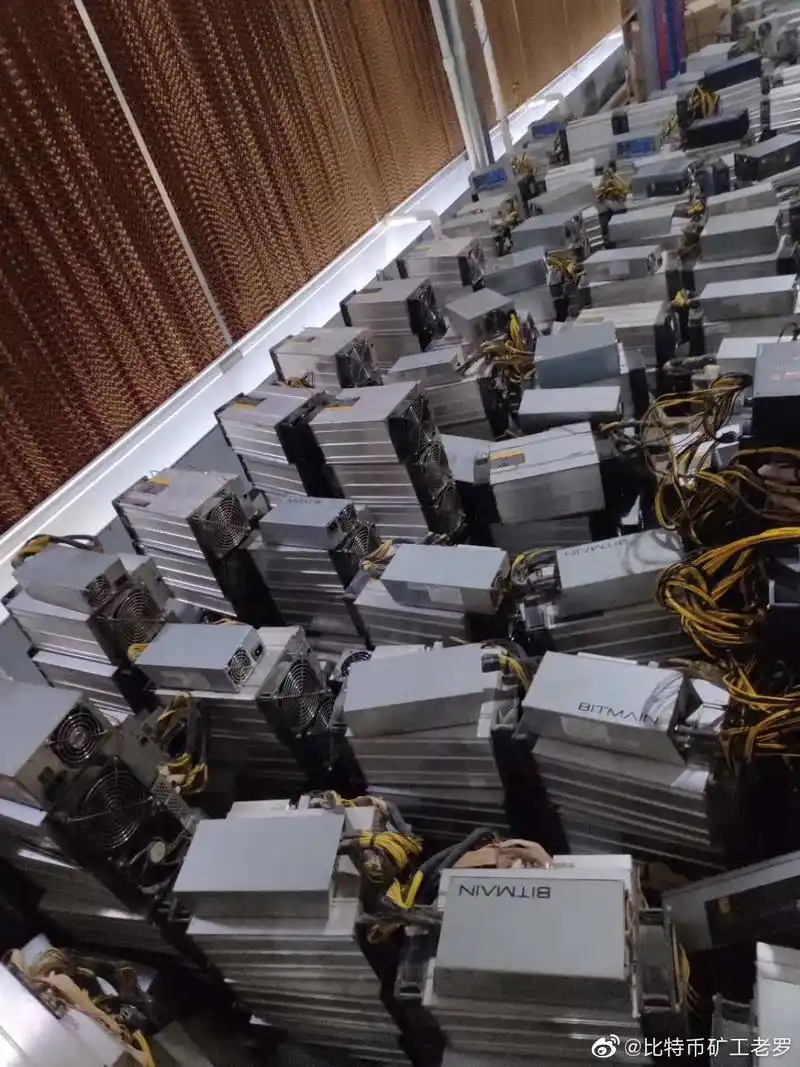In the ever-evolving world of cryptocurrency, where digital gold rushes happen at the speed of light, choosing the right hardware can make or break your mining endeavors. Picture this: you’re standing at the edge of a vast digital frontier, armed with nothing but ambition and a mining rig that could either propel you to riches or leave you in the dust. For smart miners, understanding the nuances of hardware selection isn’t just a task—it’s an art form that demands insight into Bitcoin (BTC), Ethereum (ETH), Dogecoin (DOG), and the intricate ecosystems they inhabit. Whether you’re delving into the proof-of-work puzzles of BTC or the more agile networks of ETH and DOG, your hardware choices will define your efficiency and profitability.
As we dive deeper, consider the backbone of mining: the mighty mining rig. These beasts are more than just assemblies of chips and fans; they’re the engines that power the blockchain revolution. A top-tier rig, optimized for BTC’s SHA-256 algorithm, might feature high-end ASICs that churn through hashes at blistering speeds, while ETH’s shift to proof-of-stake has miners rethinking GPU-based setups for versatility. But don’t overlook DOG, that playful underdog of the crypto world, which often runs on similar hardware to BTC but with lower barriers to entry. The key lies in balancing power, cost, and energy consumption—factors that can turn a casual hobbyist into a savvy operator running their own mining farm.
Now, let’s talk specifics: what makes a miner truly smart? It’s not just about raw power; it’s about smart integration. For instance, when eyeing a miner for BTC, you want something like the latest ASIC models that offer hash rates upwards of 100 TH/s without guzzling electricity like an outdated relic. Contrast that with ETH mining, where GPUs reign supreme due to their flexibility in handling Ethereum’s Ethash algorithm, allowing miners to pivot to other tasks or currencies seamlessly. DOG mining, on the other hand, can often be tackled with more affordable rigs, making it accessible for newcomers who might not have the budget for high-stakes BTC operations. Remember, a mining rig isn’t a one-size-fits-all solution; it’s a tailored suit in a world of off-the-rack options.

Energy efficiency emerges as a critical battleground in this hardware hunt. In an era where environmental concerns shadow every kilowatt-hour, selecting hardware that minimizes waste is paramount. BTC miners, for example, must grapple with the energy demands of their rigs, often leading to partnerships with hosting services that provide cooling and power at scale. This is where mining machine hosting shines, offering a lifeline for those without the space or resources for a personal setup. Imagine outsourcing your ETH or DOG mining to a professional farm, where state-of-the-art facilities handle the heat and noise, allowing you to focus on strategy rather than maintenance. Such services not only boost uptime but also integrate seamlessly with exchanges, making it easier to convert your mined coins into real-world value.
Yet, the landscape bristles with unpredictability—exchanges fluctuate, regulations tighten, and new currencies emerge like shooting stars. A smart miner stays ahead by diversifying hardware choices, perhaps blending a dedicated BTC miner with versatile rigs for ETH and DOG. Why? Because while BTC demands unwavering commitment to its rigorous protocol, ETH’s ecosystem rewards adaptability, and DOG’s volatility can lead to quick wins. Enter the concept of a mining farm: a centralized hub where multiple rigs operate in harmony, monitored through sophisticated software that tracks performance and profitability in real-time.
Delving into the technicalities, let’s not forget the miner itself—the heart of your operation. Whether it’s a standalone unit or part of a larger rig, factors like thermal management and overclocking potential can dramatically influence outcomes. For BTC enthusiasts, a miner with superior cooling might prevent costly downtimes, whereas ETH miners benefit from rigs that support dual mining, squeezing extra value from DOG or other altcoins. And in the broader context, exchanges play a pivotal role; after all, what’s the point of mining if you can’t swiftly trade your rewards? Platforms like Binance or Coinbase integrate with mining software, turning your hardware into a gateway to global markets.
But here’s where the rhythm shifts: not every miner needs to go big. For the solo operator, starting small with a basic rig for DOG could be the perfect entry point, building skills before scaling up to BTC or ETH dominance. Hosting services amplify this growth, providing scalable solutions that adapt to your ambitions. Think of it as a symphony: each piece of hardware plays its part, creating a harmonious blend that withstands the crypto world’s bursts of activity and sudden lulls.

In conclusion, the smart miner’s guide to choosing hardware is about foresight, flexibility, and a dash of daring. By weighing the strengths of BTC’s unyielding blockchains against the dynamic allure of ETH and DOG, and by leveraging hosting for efficiency, you craft a strategy that’s as robust as it is rewarding. So, gear up, dive in, and let your hardware do the heavy lifting in this exhilarating digital gold rush.
One response to “The Smart Miner’s Guide to Choosing Hardware”
-
Delving into the nuances of mining hardware, this review offers a vibrant exploration of technical details, unexpected market trends, and rich, creative insights that empower both novice and seasoned miners on their quest for optimal performance.

Leave a Reply